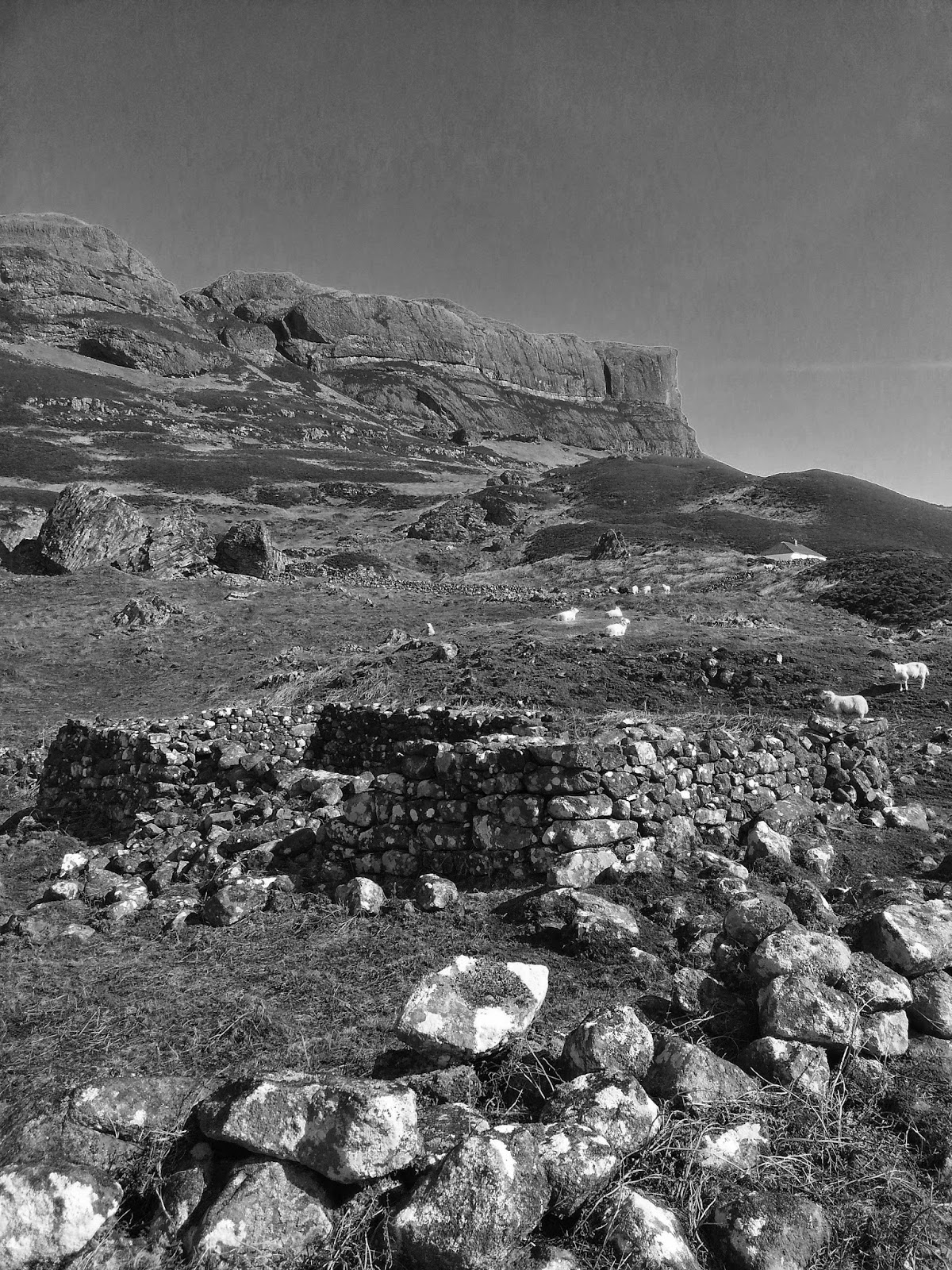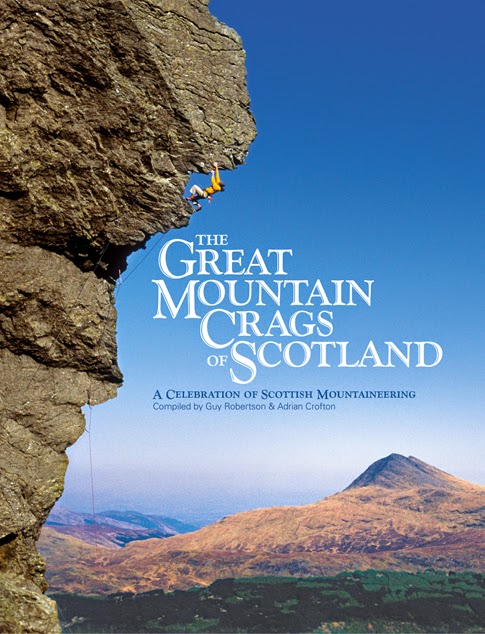A long, cold winter extended the bouldering season into a chilly spring lasting well into May. If there is still ski-ing into May, it means then there is still good bouldering to be had.
 |
Boulder-prospecting on Islay...
|
The main news is Dumbarton Rock has had a face-lift. Local climbers, the MCoS, the
TCA and Stone Country all worked hard with Historic Scotland and West Dunbartonshire Council to begin a long process of 'refurbishing' the crag and boulders in tandem with a local riverside development plan. First off was a scrubbing of most of the graffiti on the boulders, returning the rock to its unusual foundation of pitted orange basalt. After that a mega clean-up session saw the crag transformed into quite a pleasant 'green corner'. We plan to keep it that way.
 |
| Suckers Boulder with new face |
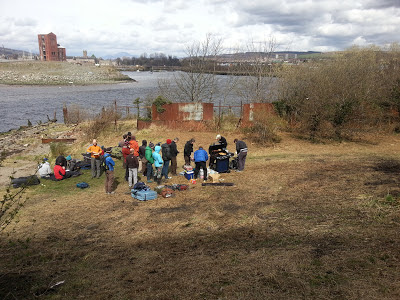 |
| TCA BBQ after the clean-up |
Back to the bouldering. In Glasgow, Alex Gorham and others have been slowly unearthing the potential of what is just called 'The Dark Side' by those in the know. More details will be revealed soon, but some fine sandstone lines have been discovered not more than 30 minutes from the city centre. It's only good in windy, dry weather in spring and summer, which is just what we have at the minute. The crags and boulders here were discovered years ago by Willie Gorman but he thought them too green to bother with. Not any more!
 |
| 'The Dark Side' new venue: John Watson on an unnamed 7a+ classic line |
In the North-East the Aberdeen seacliffs continue to be developed in terms of bouldering and sport routes. The bouldering at
Pow Kebbuck, amusingly called Sharmasheugh by locals, seems to be the highlight of the season, with elegant roof problems providing the meat of the action. Luke Fairweather climbed the hard
Dr Inferno at 8a, repeated by Marcus Bean. Tim Rankin did some burly rock-shifting to clear the Light Bulb bloc at Clashfarquhar, opening up several plum lines including the 7c of Neon. Photo topo below.
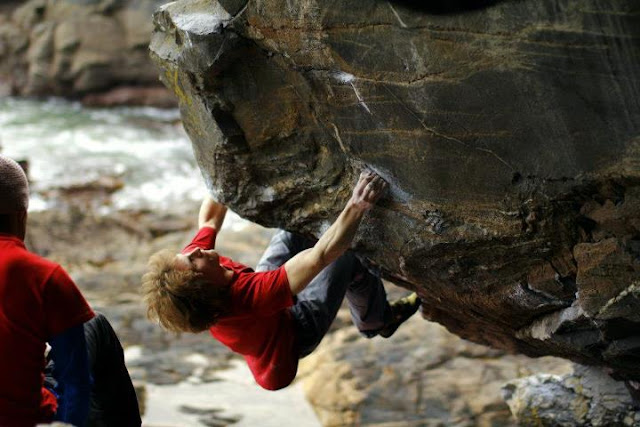 |
| Sharmasheugh: Dr Inferno 8a |
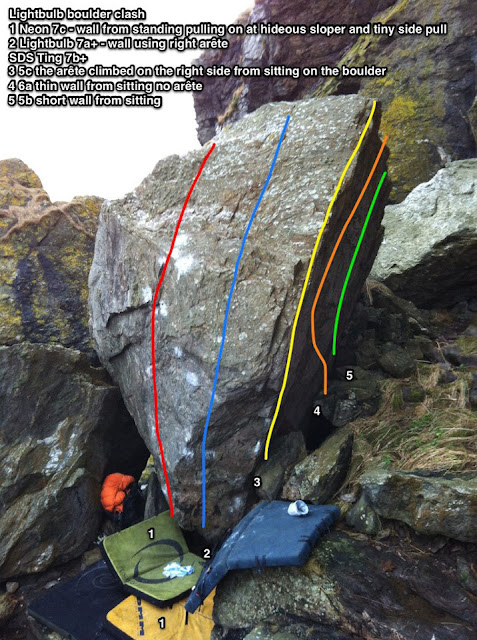 |
| Clashfarquhar: Light Bulb Boulder |
A new guide for Torridon bouldering, from Richie Betts and Ian Taylor, should be with us soon, and Torridon has had a continuous gold rush of new lines, almost too many to mention. Richie Betts repeated Stokes Croft, a fine 8a on the upper tier. We are all just fiercely jealous to be so far from Torridon as every weekend seems to see a new 5-star classic!
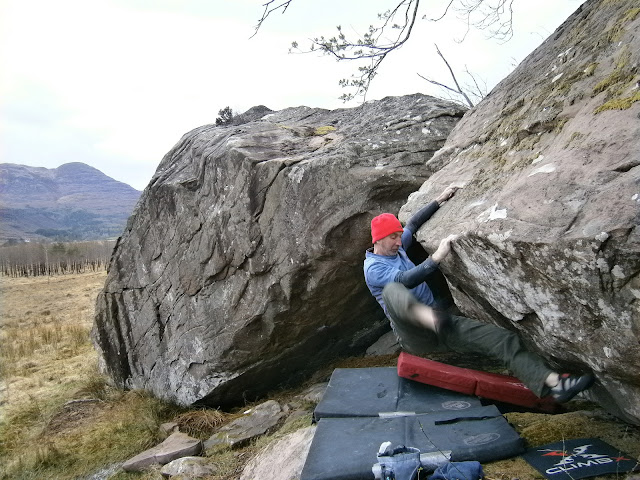 |
| Torridon: Castaways by Nigel Holmes 6b+ |
Dan Varian, with film-maker Nick Brown in tow, has been mopping up the big unclaimed lines in Scotland. He has just completed two new 8as at the sickeningly-steep Carrick Castle bloc (next to the giant bloc with the sport route Trench Warfare). The main line is called 'Marra Time', traversing from a stand in the middle of the face to the left arete.
 |
| Marra Time at Carrick Castle (Dan Varian's new 8a): Photo by Nick Brown |
Dan also climbed the 'futuristic' boulder at Ardgour saying it went at an amenable 7c, but a truly hard line still lies on this impressive bloc. He also claimed a direct line left of Precious in Glen Croe, bagging it another hefty grade of 8a. A variation of Precious was climbed by Alex Gorham to give 'Semi-Precious' 7c+ (see the excellent wee vid).
In Edinburgh, it's worth checking out the
Currie Wa's exhibition at water of Leith Visitor Centre. David Buchanan has a small but fascinating exhibition of photos and texts of the Curre Wa's, used by Dougal Haston and friends to boulder in the 50s and 60s. Most walls are now overgrown but some can still be climbed. I'll post some more photos on this historical bouldering curiosity soon.
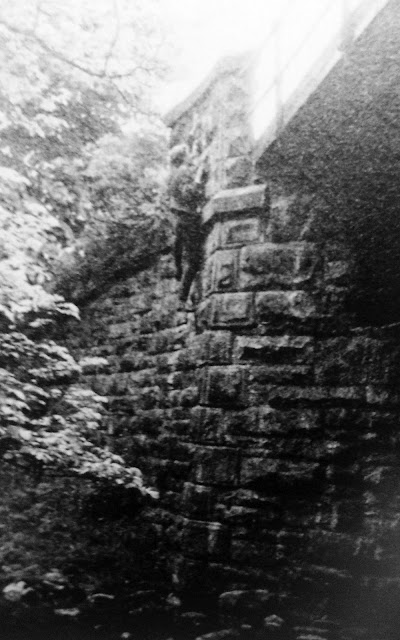 |
| Dougal haston on Spike Wall on Edinburgh's Currie Wa's |
Paul Whitworth and friends have developed some bouldering at Levenwick in Shetland. The sandstone roofs look terrific quality, if you happen to be that far north.
UKC details here.
 |
| Levenwick Bouldering wall on Shetland (Pic courtesy Paul Whitworth) |
Craigmaddie in Glasgow has seen some new lip traverses, taking the problem count to well over 50. Not many rate this venue, but if you stare harder, you begin to see more. It's a terrific outlook as well, and for rock-starved, Dumby-hating Glaswegians, it's the perfect antidote.
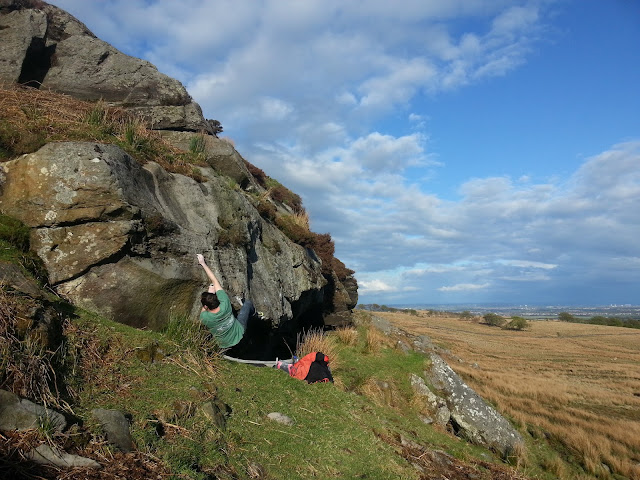 |
| The Short Haul, 6b traverse at Craigmaddie |
Dave MacLeod is back bouldering like stink in the Arisaig Cave, working some very meaty project traverses and straight-ups. He's going to post a topo soon, but make sure you're climbing 7c to 8b if you want to take anything away from here, it's proper steep!
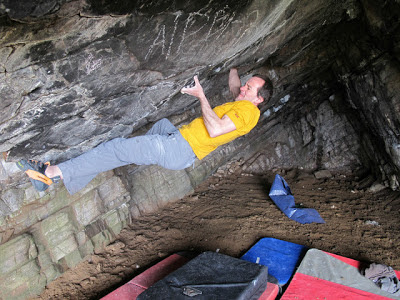 |
Arisaig Cave project: Dave MacLeod
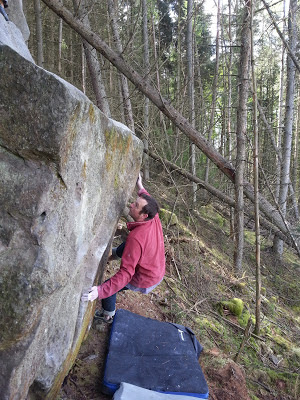 |
Dark Side bouldering...
|
|














